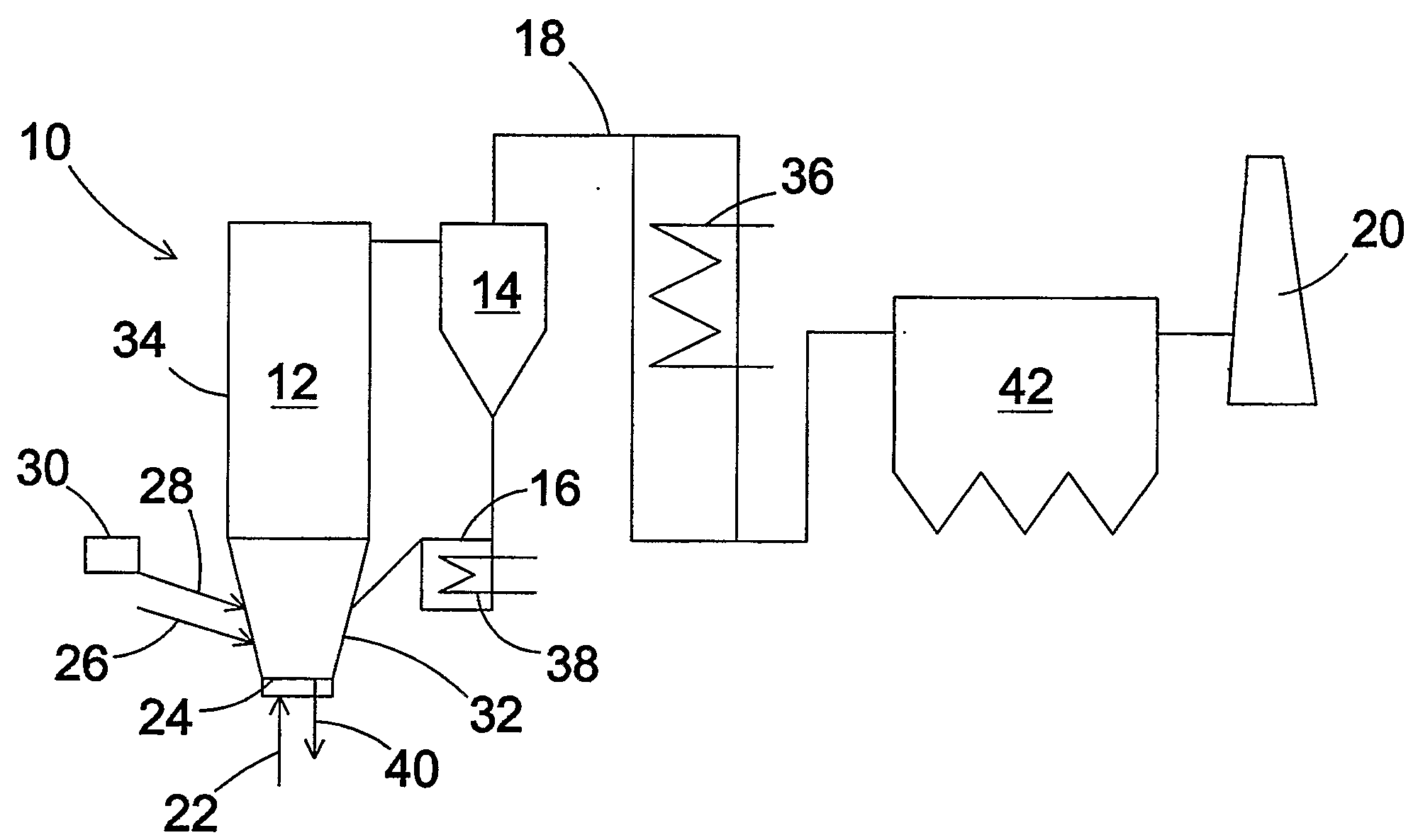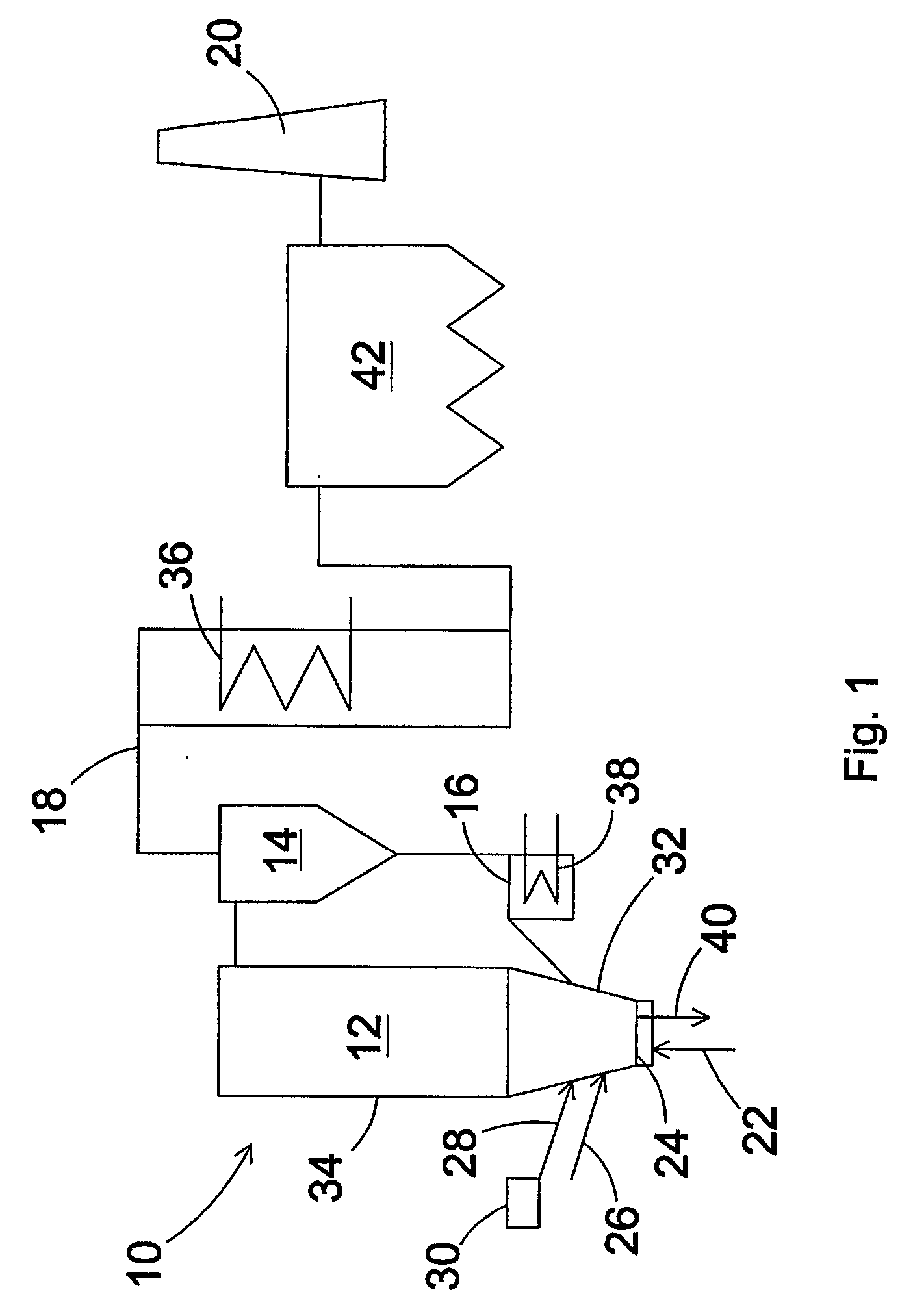Method of Combusting Oil Shale in a Circulating Fluidized Bed Boiler
a technology of circulating fluidized bed and oil shale, which is applied in the direction of combustion types, furnaces, lighting and heating apparatuses, etc., can solve the problems of high corrosion, high amount of fly ash, etc., and achieve low density, low fluidization velocities, and reduced size
- Summary
- Abstract
- Description
- Claims
- Application Information
AI Technical Summary
Benefits of technology
Problems solved by technology
Method used
Image
Examples
Embodiment Construction
[0019]FIG. 1 shows schematically a CFB boiler 10 comprising a furnace 12, a cyclone separator 14, an external heat exchange member 16 and a flue gas channel 18 for leading flue gases through a stack 20 to the environment. The furnace comprises means 22 for introducing primary air through a bottom grid 24, and means 26 for introducing secondary air at a higher level of the furnace. Secondary air can be introduced at multiple levels, but for the sake of simplicity, they are not shown in FIG. 1.
[0020] The furnace comprises means 28 for introducing fuel, which, when using the present invention, is preferably oil shale. The fuel may alternatively be another fuel which has similar properties as those of the oil shale. Advantageously, the fuel is introduced to the furnace pneumatically. The means 28 for introducing fuel may comprise means 30 for crushing the fuel to a predetermined particle size. Preferably, oil shale is crushed to a mean particle size of 1 to 2 mm. In order to minimize u...
PUM
| Property | Measurement | Unit |
|---|---|---|
| fluidizing velocity | aaaaa | aaaaa |
| fluidizing velocity | aaaaa | aaaaa |
| fluidizing velocity | aaaaa | aaaaa |
Abstract
Description
Claims
Application Information
 Login to View More
Login to View More - R&D Engineer
- R&D Manager
- IP Professional
- Industry Leading Data Capabilities
- Powerful AI technology
- Patent DNA Extraction
Browse by: Latest US Patents, China's latest patents, Technical Efficacy Thesaurus, Application Domain, Technology Topic, Popular Technical Reports.
© 2024 PatSnap. All rights reserved.Legal|Privacy policy|Modern Slavery Act Transparency Statement|Sitemap|About US| Contact US: help@patsnap.com









